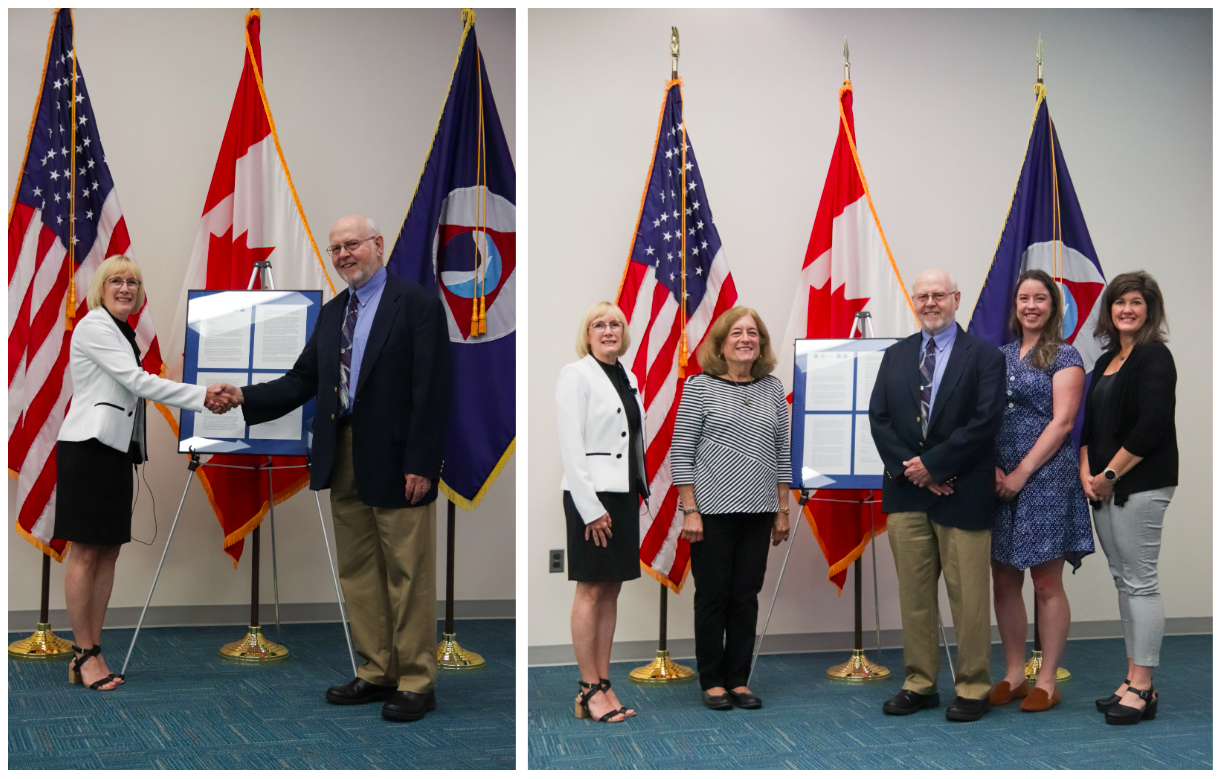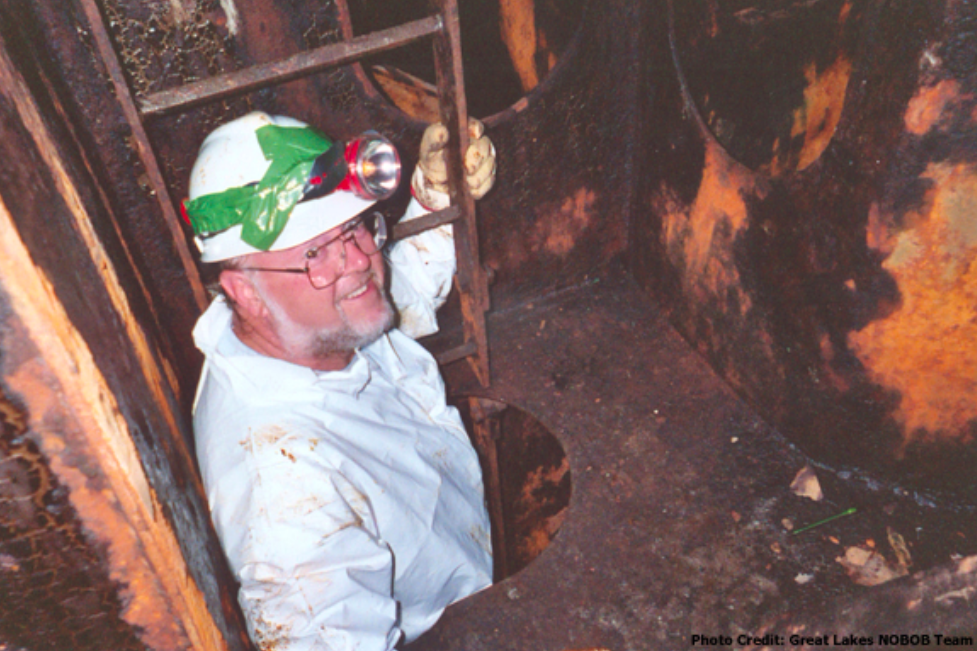This week, NOAA GLERL and partners had the pleasure of formally recognizing Dr. David Reid, whose research on aquatic invasive species (AIS) has had significant positive impacts on the health of the Great Lakes. Recognizing this renowned former GLERL scientist and his important research serves as an exciting kickoff to the celebration of our laboratory’s 50th anniversary in 2024!
Dr. Reid’s work played an instrumental role in providing scientific evidence to support the improvement of ballast water management legislation for commercial shipping traffic entering the Great Lakes. Through Dr. Reid’s scientific efforts and leadership of a world-class team of researchers, we have seen a sharp decline in the introduction of new AIS into the Great Lakes basin and a heightened awareness of the impacts that invasive species can have on our ecological, economic, and cultural resources.

Beginning his tenure with NOAA GLERL in 1985 as a physical scientist, Dr. Reid has worked on a wide variety of projects that have provided substantial benefits to the greater Great Lakes research and management community. By combing through hundreds of historic reports from a diversity of sources throughout his career, in the early 2000s he helped to create the first comprehensive database of bulk ship traffic cargo patterns (as a surrogate for ballast data) for the Great Lakes. This database served as a predecessor of National Ballast Information Clearinghouse as well as revealing links between ship cargo movement and AIS introductions.
With almost no prior experience within the field, Dr. Reid helped to build a world-class research team to tackle one of the most significant challenges in invasion management in the Great Lakes, the NOBOB (No-Ballast-On-Board) challenge. While management of ballasted foreign ships was relatively well established, essentially nothing was known about the extent and mechanisms of AIS introductions related to foreign ships that entered the Great Lakes under the NOBOB designation. Under Dr. Reid’s leadership, a binational scientific research project was convened, engaging a diverse group of experts from NOAA’s government, university, and industry partners.

Helping to lead this team and secure funding support for over 6 years of study provided the core science needed to implement key ballast water management regulations in Canada (2006) and the U.S. to mitigate invasions from NOBOB vessels. Through his unwavering commitment to building consensus among U.S. and Canadian governments and stakeholders, Dr. Reid has made significant contributions to the development of ballast water management requirements in the Great Lakes St. Lawrence Seaway System – the most stringent in the world – to prevent aquatic invasions through marine and Great Lakes shipping.
Dr. Reid also envisioned a ‘one stop shop’ website where Great Lakes researchers could share verified information on current and predicted AIS, which would allow researchers to avoid duplication of basic efforts and ‘get ahead of the curve’ in addressing new invasions. He envisioned this new database as a regional node in a distributed network of databases operating at local to international levels, playing a key role in both verifying and aggregating information at the regional scale. The Great Lakes Aquatic Nonindigenous Species Information System (GLANSIS – launched in 2003) has grown from that vision to now serve the AIS-related information needs of researchers, managers, educators and stakeholders throughout the region.

Dr. Reid’s tireless efforts to address the ballast water vector for the introduction of invasive species to the Great Lakes and his efforts to promote regional information sharing have borne fruit. As reported in the State of the Great Lakes 2022 Report (based on data synthesized by GLANSIS) no new species associated with ballast have been introduced since 2006. As concluded in the recent invasion analysis of Ricciardi and MacIsaac (2022): “To our knowledge, the 2006/2008 regulation is the only case of a policy intervention that is linked to a massive reduction of the invasion rate of a large aquatic ecosystem. Since the current regulations were implemented, the overall rate of discovery of new non-native species declined by 84.6% compared to the partial regulation period. No other equivalent period of time in the documented history of the Great Lakes basin since 1835 has had fewer invaders discovered than the period of 2007−2019…”
Even in retirement, Dr. Reid has continued to work with the shipping management agencies to ensure the new regulations are working effectively. Now, he is being formally recognized by the Aquatic Nuisance Species Task Force, the Great Lakes St. Lawrence Seaway Development Corporation, the International Joint Commission, the Great Lakes Commission and the Great Lakes Fishery Commission for his tremendous accomplishments and many years of service towards protecting our Great Lakes.
The Great Lakes community sincerely thanks and congratulates you, Dr. Reid!
